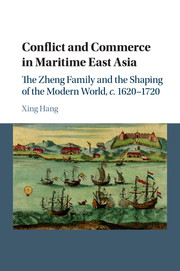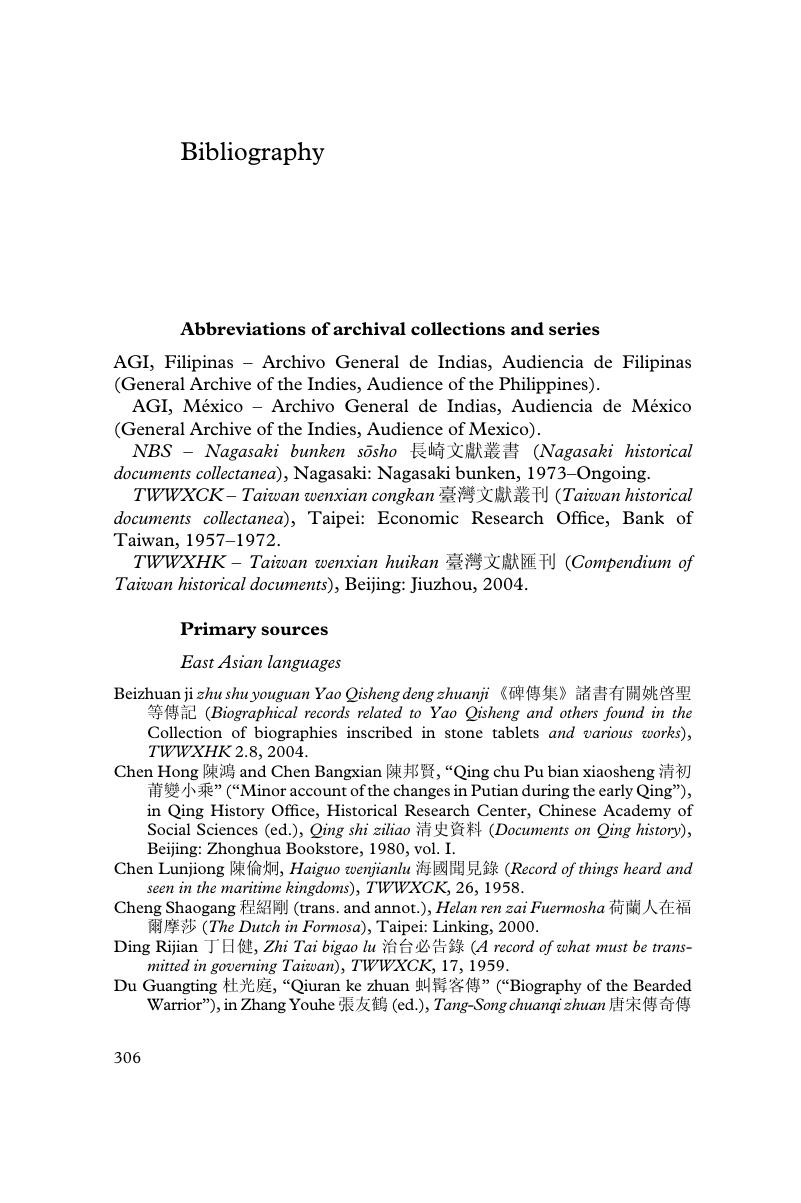 Conflict and Commerce in Maritime East Asia
Conflict and Commerce in Maritime East Asia Book contents
- Conflict and Commerce in Maritime East Asia
- Studies of the Weatherhead East Asian Institute, Columbia University
- Conflict and Commerce in Maritime East Asia
- Copyright page
- Contents
- Figures and maps
- Tables in Appendix 3
- Acknowledgments
- Maps - PDF only
- Introduction
- 1 Setting the stage
- 2 From smuggler-pirates to loyal Confucians
- 3 Between trade and legitimacy
- 4 Brave new world
- 5 The Zheng state on Taiwan
- 6 The lure of “China”
- 7 A contingent destruction
- 8 Conclusion
- Appendix 1 Romanization of East Asian languages
- Appendix 2 Measurements and currency conversions
- Appendix 3 Zheng market share, revenues, and profitability, 1640–1683
- Appendix 4 Glossary of Chinese characters
- Bibliography
- Index
- References
Bibliography
Published online by Cambridge University Press: 18 December 2015
- Conflict and Commerce in Maritime East Asia
- Studies of the Weatherhead East Asian Institute, Columbia University
- Conflict and Commerce in Maritime East Asia
- Copyright page
- Contents
- Figures and maps
- Tables in Appendix 3
- Acknowledgments
- Maps - PDF only
- Introduction
- 1 Setting the stage
- 2 From smuggler-pirates to loyal Confucians
- 3 Between trade and legitimacy
- 4 Brave new world
- 5 The Zheng state on Taiwan
- 6 The lure of “China”
- 7 A contingent destruction
- 8 Conclusion
- Appendix 1 Romanization of East Asian languages
- Appendix 2 Measurements and currency conversions
- Appendix 3 Zheng market share, revenues, and profitability, 1640–1683
- Appendix 4 Glossary of Chinese characters
- Bibliography
- Index
- References
Summary

- Type
- Chapter
- Information
- Conflict and Commerce in Maritime East AsiaThe Zheng Family and the Shaping of the Modern World, c.1620–1720, pp. 306 - 325Publisher: Cambridge University PressPrint publication year: 2016


